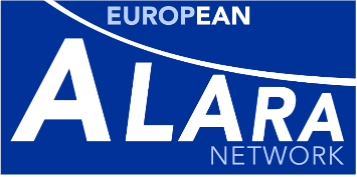In all these domains, the main objective for “ALARA managers” is still to continue to reduce individual doses, especially the highest ones, because iniquities, which are not acceptable, are still seen. For example, is it still reasonable that less than 1% of the contractors working in NPPs receive annual doses above 10 mSv, but that these account for 10 to 15% of the total collective dose? Is it still reasonable that, depending on the hospital, the equipment and methods used, and the medical staff involved, a patient's dose might vary by up to a factor of 20 (for the same examination and identical clinical results)?
ALARA must not anymore be seen as being confined to cost-benefit case studies made by radiation protection professionals. As an introduction to this 28th ALARA Newsletter, let us remind you of the EAN working group's definition of the ALARA culture: “the ALARA culture is a reference framework, a state of mind and an attitude allowing an individual and/or an organisation to act in a responsible way in order to manage radiation risks and giving radiation protection the priority it should have. The ALARA culture is - characterised by risk awareness, balanced judgement of risks and benefit, and the capability to develop and use required skills, competences and tools for risk assessment and management, balance of resources and economic and societal considerations, - realised through trans-disciplinary education and training tailored at each level, - supported by management commitment, guidance and supervision of competent authorities, - making use of a clear definition of responsibilities.”
Content of the issue
- Editorial, F. Vermeersch, P. Croüail, P. Shaw (EAN)
- Medical ALARA Culture - initial reflection from the EFOMP officers, S. Christofides, R. Padovani, W.Van der Putten, A. Torresin, P. Allisy-Roberts, C.J. Carvana, P. Sharp, K-U. Kash, W. Schlegel
- Exposure go ALARA in Industrial Radiography, G. Frasch (BfS, Germany)
- Type testing and type approval of basic-protection devices in Germany, S. Neumaier, H. Dombrowski (PTB, Germany), K-H. Motzkus, U. Häusler (BfS, Germany)
- Finding of a container contaminated by 60Co in the port of Genoa (Italy), L. Garbarino, M. Calimero (Environmental Protection Agency of Liguria, Italy)
- The PCR (RPO) regional networks in France, C. Lefaure
- EANNORM round table Workshop on "Scenarios for Dose Assessment in the NORM Industry"
